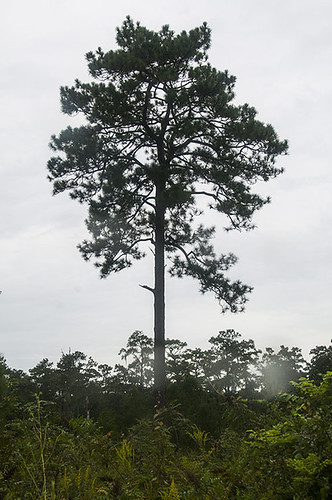
Once a plantation and popular hunting spot, the Tall Timbers Plantation Research Station and Land Conservancy in Tallahassee, Florida, is home to healthy longleaf forests that are filled with a variety of wildlife, including the Northern bobwhite, a type of quail.
When the plantation’s owner, Henry Beadel, died, he willed the land and resources to create a special nature preserve to study the effects of fire on bobwhites, turkeys and other wildlife. As set out in Beadel’s will, strides have been made in re-establishing the longleaf pine ecosystem – one of the most endangered ecosystems in North America.
Fifty years of prescribed burning on the plantation has restored habitat for bobwhites, as well as many other declining species of birds, reptiles, amphibians and plants. Formerly cultivated lands and natural areas that were never farmed provide benchmarks for restoration studies. Instead of attracting hunters, people from across the United States and all over the world now travel to the preserve to train in prescribed burning, conduct research, and tour the facility.
Nationally, bobwhite numbers have declined in recent years, with some regions experiencing decreases of up to 90 percent. Loss of habitat is one of the major factors cited for the quail’s decline. Bobwhites depend on edge habitats, such as at the border of a field or along forestland. But at Tall Timbers, bobwhite numbers are rebounding.
In the ’90s, only one quail could be found per 10 acres, and now one to two quail occupy an acre, he said. Habitat management directed at improving conditions for bobwhites benefit many other wildlife species, too.
Eric Staller, the station’s wildlife biologist and land manager, has witnessed the results of prescribed burning during the past 20 years. “We have the largest red-cockaded woodpecker population on private lands because of frequent (prescribed) fire,” he said. The endangered woodpecker species only forages in and on the pine trees, preferring the longleaf because of their longevity and heavy sap flow.
With its wider-set leaves and open canopy, longleaf pine allows more sun to reach the groundcover that provides food and shelter for wildlife. Longleaf can tolerate more frequent burns than other trees, keeping the hardwoods out and encouraging grasses and forbs to grow, also providing wildlife food and habitat. Staller burns 60 to 70 percent of the station’s 2,700 acres of uplands each year.
“Restoration is continual,” Staller said. “If I stopped burning for three years, the hardwoods would come back, and after that, we would really lose ground. My goal is to have the understory consist of one third woody stems, one third grasses and the rest forbs, because that is what the wildlife in the Southeast do well in.”
USDA’s Natural Resources Conservation Service (NRCS) provided the station with technical and financial assistance to restore and manage longleaf. In fiscal year 2015, Staller enrolled 1,200 acres into the Longleaf Pine Initiative (LLPI) and 2,000 acres into the Working Lands for Wildlife (WLFW) partnership, two efforts by NRCS to restore and enhance habitat. The assistance through LLPI and WLFW are helping the station plant longleaf pines, carry out prescribed burning and remove invasive weeds.
“Years of management has not only worked to restore quail, but they have wild turkey and deer in abundance,” said Steve Tullar, NRCS district conservationist in Monticello, who worked with the station to make conservation improvements. “I am proud of the land management they are doing on their property. Plus, they work with and influence other private land owners to improve forestland. This is important because so much of the land in Florida is privately owned."
NRCS now has available $10.6 million for Fiscal Year 2016 to aid private landowners wanting to restore longleaf forests. Assistance is available to landowners in Texas, Louisiana, Mississippi, Alabama, Florida, Georgia, South Carolina, North Carolina and Virginia. Interested landowners are encouraged to contact their local USDA service center.

